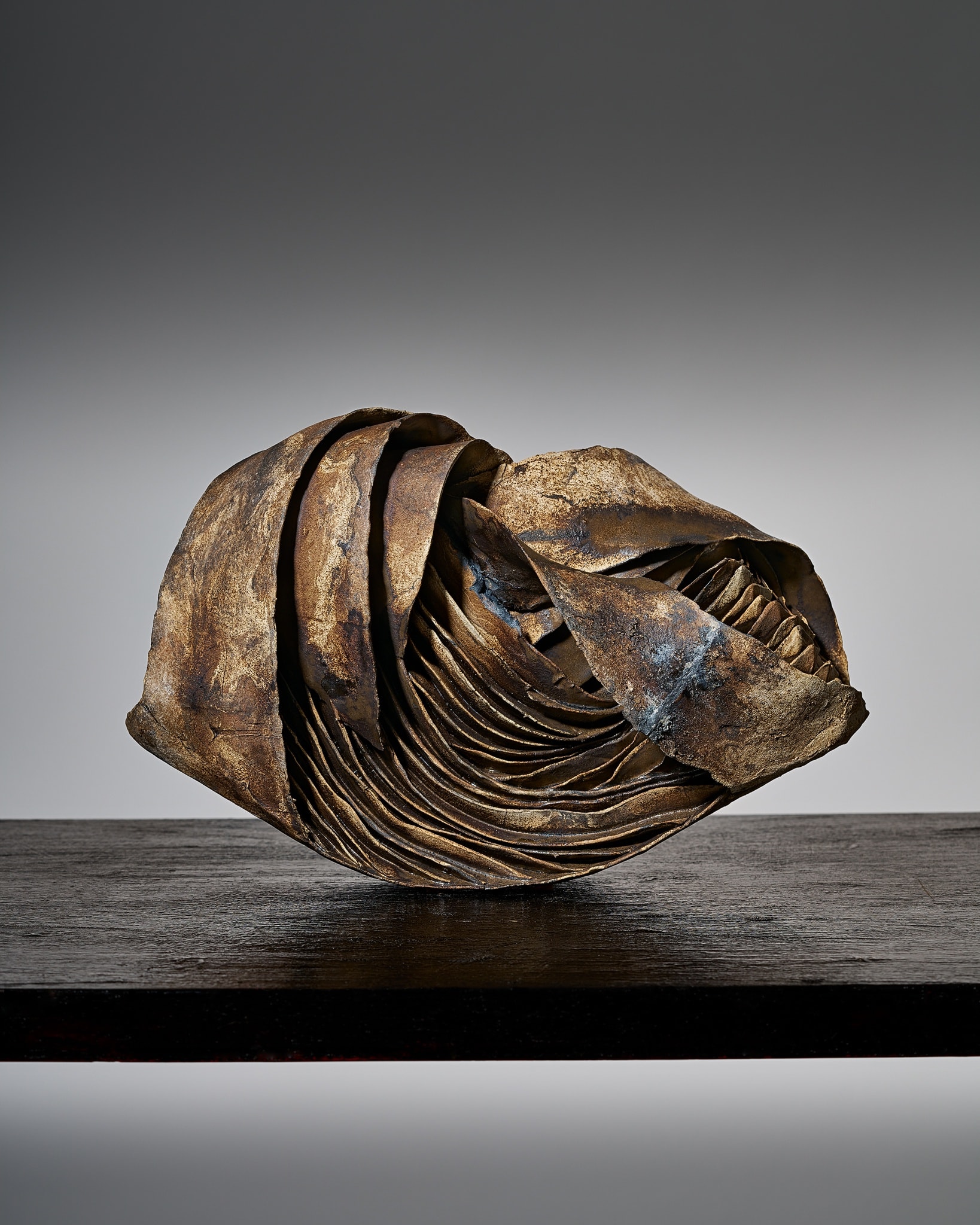
Yukiya Izumita, Sekisoh 積層帯 (C27875NP)
It is often said of ceramic art, especially ceramic art from Japan, that it expresses the quality of the earth from which it came. It is something like wine, which connoisseurs speak of in terms of terroir: a specific patch of land which infuses the drink in a marvelous and subtle manner, hard to describe exactly but instantly recognizable.
This analogy is probably less relevant to ceramics than it used to be. Like everything else, the art form is now caught up in a vast system of global exchange. Bags of clay and glaze materials are readily ordered from afar; ideas and impressions, too, fly this way and that. Yet there are still a few artists working today for whom the “flavor” of their local soil (in Japanese, tsuchi aji) is the animating spirit of their work. Unsurpassed among these grounded souls is Yukiya Izumita. He is based in the far north of Honshu (Iwate Prefecture, in the Tohoku region). He digs all of his clay from nearby iron-rich beds, right at the ocean’s edge. The salt deposited by the sea, and the turbulent energies of its unstoppable constantly changing waves, inscribe themselves into his objects.
One way to think of Izumita’s work, in fact, is as an endless and wordless book, written in tribute to his austerely beautiful surroundings. He has developed an inventive repertoire of techniques in which the clay is treated like paper. In his Yui (“Knot”) forms, he rolls it into thin sheets which he composes in free space. During this daredevil procedure, the clay is lined with actual washi paper to strengthen it, which are peeled away after it dries. In other related works he uses folding techniques to impart subtle angular rhythms to his ceramics, lending them the generative grace of mathematical models.
Izumita’s best-known body of work, Sekisoh, is closer to geology than to origami. The title, which can be translated as “laminations” or “accumulated layers,” aptly captures the signature feature of the series: a section of nested arcs, which sit within the wall of a bowl or other ceramic form. The process of making these works (which can be viewed in a video on Ippodo Gallery website) is both decisive and delicate. After roughing out the overall form, he separately rolls out a series of coils, then flattens them and arranges them into a cascade. This is then temporarily backed with clay, and placed into a void cut into the form. Izumita can position this insert however he likes, sometimes reinforcing the existing curvature of the object, sometimes running across it in a contrary current.
The Sekisoh pieces, particularly once they are surfaced with mineral-rich engobes and glazes, offer multiple material metaphors. Their stratigraphy alludes to the steady deposits that actually form a clay bed over decades and centuries; the wave forms also, of course, refer to the churning energies of the sea. And perhaps there is a more personal symbolism at work, too: the layers within each work representing the passage of time in the studio, the hours accumulating into days, months and years, Izumita gradually building his own artistic contribution atop the rich history of ceramics in Japan. Take one of his teabowls in your hands, and you hold time itself. It is an experience equally of chaos and calm, of salt and soil, which have swirled about for millennia and at last come to rest.
Images courtesy of Douglas Dubler 3 and Glenn Adamson.

Glenn Adamson
Independent Curator and Art Writer
